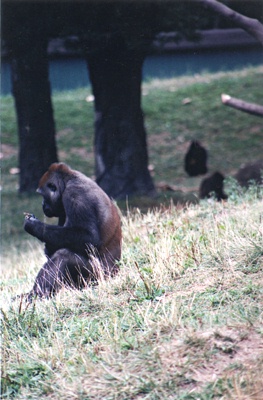All Nonfiction
- Bullying
- Books
- Academic
- Author Interviews
- Celebrity interviews
- College Articles
- College Essays
- Educator of the Year
- Heroes
- Interviews
- Memoir
- Personal Experience
- Sports
- Travel & Culture
All Opinions
- Bullying
- Current Events / Politics
- Discrimination
- Drugs / Alcohol / Smoking
- Entertainment / Celebrities
- Environment
- Love / Relationships
- Movies / Music / TV
- Pop Culture / Trends
- School / College
- Social Issues / Civics
- Spirituality / Religion
- Sports / Hobbies
All Hot Topics
- Bullying
- Community Service
- Environment
- Health
- Letters to the Editor
- Pride & Prejudice
- What Matters
- Back
Summer Guide
- Program Links
- Program Reviews
- Back
College Guide
- College Links
- College Reviews
- College Essays
- College Articles
- Back
King Kong
“You don't see anything. Now look higher. Still higher. Now you see it. You're amazed. You can't believe it. Your eyes open wider. It's horrible, Ann, but you can't look away. There's no chance for you, Ann. No escape. You're helpless, Ann, helpless. There's just one chance, if you can scream. But your throat's paralyzed. Try to scream, Ann. Try. Perhaps if you didn't see it, you could scream. Throw your arms across your eyes and scream Ann, scream for your life!” When uncredited directors released “King Kong” in 1933, it instantly was a hit. Fast forward to 2014, and many people will consider “King Kong” a cheesy and insignificant science-fiction film. Filled with bad acting and cut-rate special effects, the modern movie-watcher would probably leave half-way through this 100 minute movie cause instead of seeing a fancy CGI Kong, they instead are met by a claymation ape. To some this is a cheesy and unrealistic, but to me, i find it spectacular. Let’s do some math. The first motion picture to use sound along with film was “The Jazz Singer” released in 1927. “King Kong” was released in 1933. That comes out to be six years in between. So already “King Kong” is but a mere infant in the modern film industry. Now let’s take a look at the special effects used. “King Kong” used a combination of claymation and live-action footage. This method allowed for an insane amount of realism that could only be achieved with an actual model of an ape. The way they combined the claymation with the real footage felt real and life-like... For that time period. Those are the keywords of this review: FOR THAT TIME PERIOD. One scene comes to mind: During their chase of Kong, a group of men are stranded upon a tree-bridge as Kong shakes them off. What was so significant about this scene was the way they showed the men plummeting to their death. They used a model of a ravine and actual rag-dolls of the actors, then dropped them down into the crevice. This gave the scene a sense of practicality and life. Now-a-days, said effect would be accomplished solely with Computer Generated Imagery. Why I love this movie is because that the guys down in the special effects department were probably like, “Hmm, how can we give the viewer the best experience of realism ever, without burning up our budget?” And guess what, they did it. In my opinion, “King Kong” was a great movie. I thought the methods for the special effects were brilliant. I can see why it can be considered a classic. It helped to shape the way movies were made for many years to come.

Similar Articles
JOIN THE DISCUSSION
This article has 0 comments.
